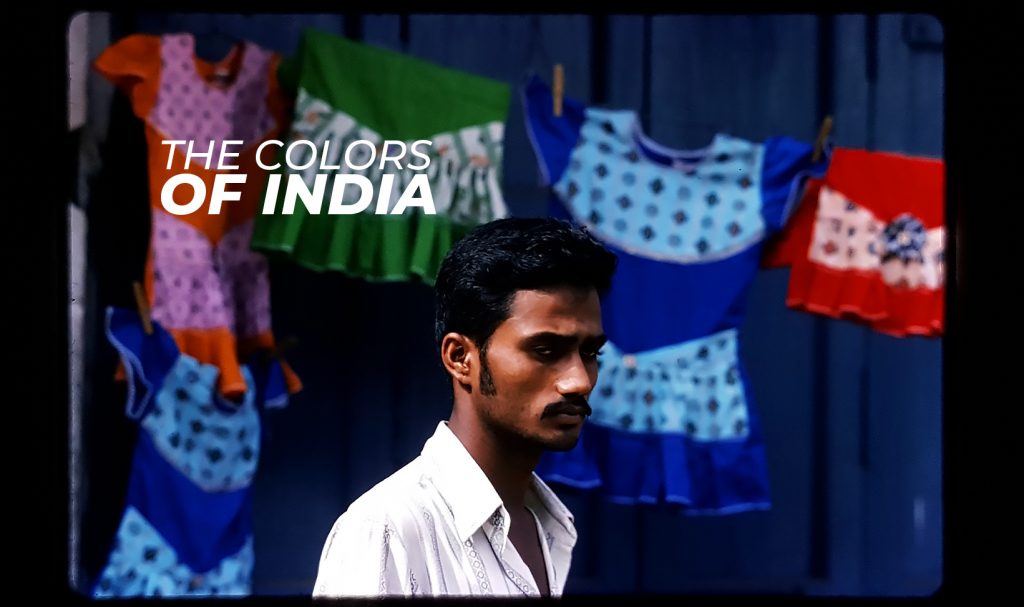13 Apr Slides.- The Colors of India
Posted at 20:02h
in 35 mm photography, 80´s, 90´s, Colour film photography, Film photography, Nikon film, Street photography, Travel photography, Vintage photography
0 Comments
As the most mundane inquiries, colors in India have a habit of ending this way: there may be two colors, there may be five, a dozen or a hundred; the only thing that is certain is that all will be different. If the radiance of a thousand suns were to burst at once into the sky, that would be like the splendor of the colors in India.
The myriad interpretations of colors in India represent the diversity of its population and early color symbolism was clearly linked to social groups, caste hierarchy and birth. Thus, certain colors that may hold a special place in a particular area may not enjoy a similar status elsewhere in the country. Many colors we associate with India are rooted in spices, such as the yellow turmeric that symbolizes holiness. Others in religious beliefs, associated with the powers and mythical life of their gods.

Each varna or caste had its symbolic color: white for the Brahmins, red for the Kshatriyas (the warriors), yellow for the Vaishnavas and indigo-blue for the Shudras (the lowest caste, the untouchables). In general, it can be said that what was dyed was considered impure, while the purest (white) was unadulterated and related to detachment.
To an outsider, the colorful culture, streets and stories seem like a page out of an old folk tale. But color, in essence, is a big part of Indian consciousness.
Photos from our Slides Photo Library,
India – 90´s
| Cookie | Duration | Description |
|---|---|---|
| cookielawinfo-checkbox-analytics | 11 months | This cookie is set by GDPR Cookie Consent plugin. The cookie is used to store the user consent for the cookies in the category "Analytics". |
| cookielawinfo-checkbox-functional | 11 months | The cookie is set by GDPR cookie consent to record the user consent for the cookies in the category "Functional". |
| cookielawinfo-checkbox-necessary | 11 months | This cookie is set by GDPR Cookie Consent plugin. The cookies is used to store the user consent for the cookies in the category "Necessary". |
| cookielawinfo-checkbox-others | 11 months | This cookie is set by GDPR Cookie Consent plugin. The cookie is used to store the user consent for the cookies in the category "Other. |
| cookielawinfo-checkbox-performance | 11 months | This cookie is set by GDPR Cookie Consent plugin. The cookie is used to store the user consent for the cookies in the category "Performance". |
| viewed_cookie_policy | 11 months | The cookie is set by the GDPR Cookie Consent plugin and is used to store whether or not user has consented to the use of cookies. It does not store any personal data. |

Sorry, the comment form is closed at this time.